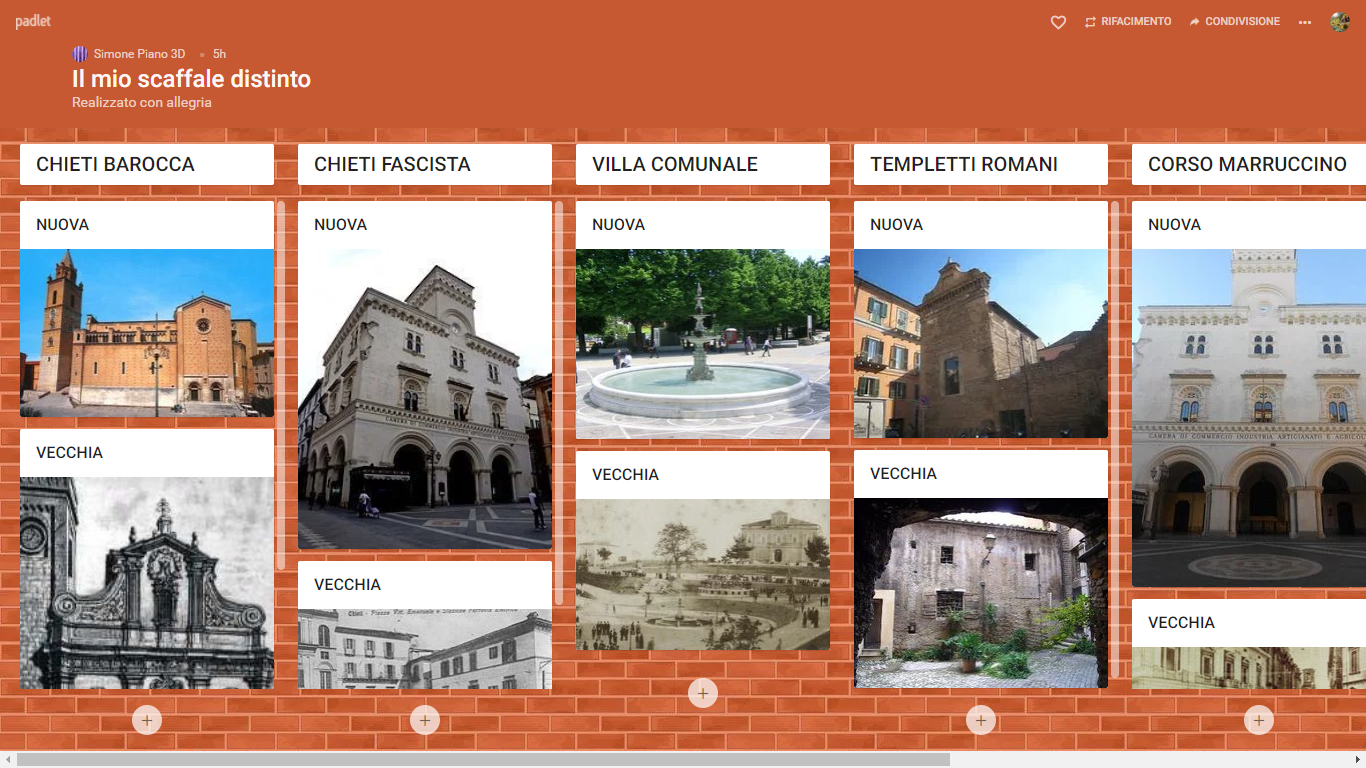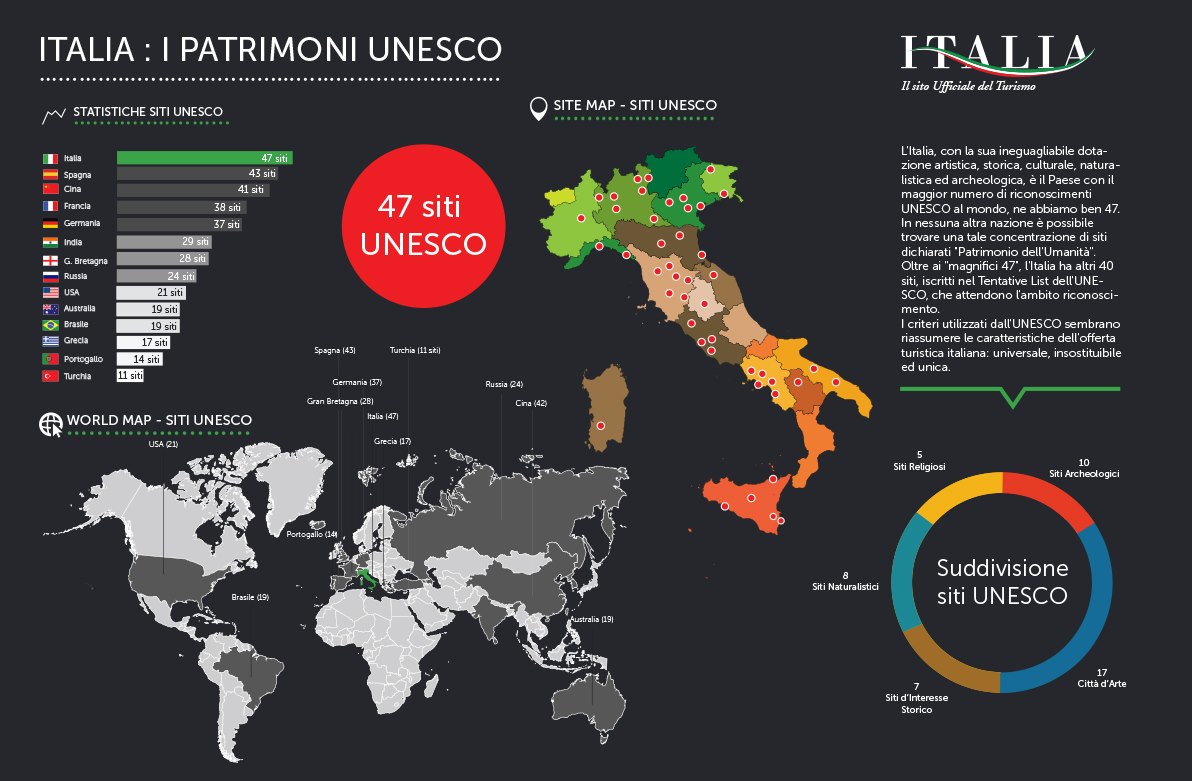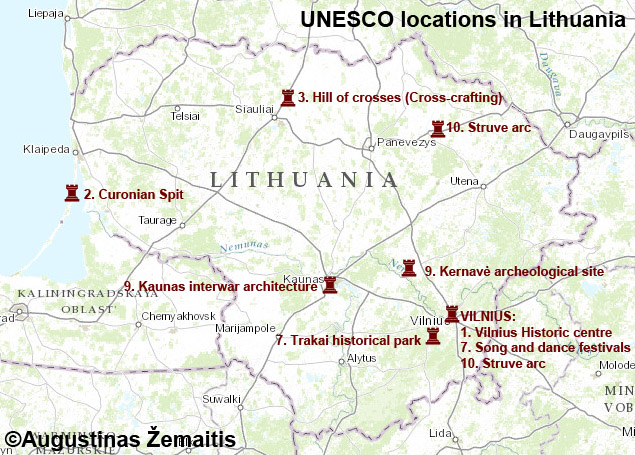Voila list des objets desquels on va étudier avec nos étudiants. SVP écrir vos objects:
https://docs.google.com/spreadsheets/d/e/2PACX-1vR0QAx3IA92vARsaxCxFFYE1MqItJ7tZQUfIc91vTeBau8xOK_0LrE-g_NPDyMMfBq6IPf0nsH-uebJ/pubhtml
Les monuments de Salerne à Avellino. Prof. Giovanni Lottino
Les étudiants divisés par groupes approfondissent leurs connaissances de la ville. https://padlet.com/simonepiano2005/tt2370ij5su5
ITALY
ITINERARIO CHIETI FASCISTA
Chieti nel ventennio fascista
Osserveremo gli edifici privati e pubblici costruiti dal 1922 al 1943. Il 1922 data ufficiale di inizio dell’era fascista in Italia e il 1943 è la data della fine. Questo periodo è comunemente chiamato “Ventennio fascista”. Il più importante architetto del periodo fu MARCELLO PIACENTINI. Il quale progettò edifici per lo Stato fascista, ponendosi come mediatore fra il tradizionalismo accademico del Novecento e le “Avanguardie” dei razionalisti. Piacentini propose il così detto “Stile littorio” come quello ufficiale del partito.
EDILIZIA A CHIETI DAL 1922 AL 1933 I due palazzi De Cesare costruiti fra il 1926 e il 1929 , presentano decorazioni per ingentilire la massa dell’edificio.
EDILIZIA DAL 1927 AL 1933 Il palazzo delle Poste fu progettato nel 1920 anno in cui furono demoliti alcuni fabbricati e iniziarono i lavori. Ci vollero 10 anni per completarlo. Inaugurato nel 1930. La Camera di Commercio del 1930, progettato da arch. Camillo Guerra di Napoli e ing. Giuseppe Florio.
EDILIZIA DAL 1933 AL 1943 Opera Nazionale Dopolavoro celebrazione del regime politico. Progettato dall’architetto Guerra. Inaugurata il 24 ottobre 1934. Biblioteca provinciale “De Meis” progettato dall’ing. Giuseppe barra Caracciolo. Costruzione che iniziò nel 1940 fu completato dopo la fine della guerra
1. PALAZZO DE CESARE
2. POSTE
3. CAMERA DI COMMERCIO
4. DOPOLAVORO
5. BIBLIOTECa de MEIS
Unesco sites in Italy http://www.sitiunesco.it/?p=5

LITHUANIA
Unesco locations in Lithuania www.kpd.lt/en/main-menu/heritage-in-lithuania/world-heritage-objects-in-lithuania.html

1.Vilnius Historic Centre. Vilnius was once the capital of Europe's largest medieval state and its large Old Town testifies its former glory with its narrow streets, Baroque church spires, and palaces of nobility. UNESCO world heritage.
2.Curonian Spit. The most famous natural location of Lithuania the 98 km long narrow peninsula combines the Lithuanian Sahara (massive sand dunes), pristine pine forests and some of the country's top seaside resorts. UNESCO world heritage.
3.Cross-crafting and its symbolism. While Lithuanians were the Europe's final pagan country they have successfully absorbed Christian tradition into their ethnic art giving birth to the unique wooden crosses and chapel posts. Originally they adorned every yard and roadside, then many were destroyed by Soviets but some were rebuilt in the 1990s. The best place to see the tradition is undoubtedly the constantly growing Hill of Crosses where hundreds of thousands of crosses and chapelposts have been erected by ordinary people ever since the mid-19th century. UNESCO immaterial world heritage.
4.The Baltic Way - Human Chain Linking Three States in Their Drive for Freedom. 700 km long human chain amassed some 2 million people linking Vilnius to Riga and Tallinn, some third of total Baltic populations. This demonstrated a massive will of Baltic States to achieve freedom from the Soviet Union. It inspired similar human chains elsewhere in places like Taiwan and Israel, but neither the length nor size of the Baltic Way was ever surpassed. UNESCO memory of the world.
5.Baltic song and dance celebrations. Every 4 years, choirs from all over Lithuania and Lithuanian diaspora are invited to Vilnius to sing Lithuanian songs together. Songs have even triggered political changes in Lithuania (the Lithuanian 1990 independence has been called "Singing revolution"). Witnessing the Song Festival's "Day of the Songs" with a parade and performance of some 30 000 singers is a powerful experience. If visiting at another time you may still check the stand in Vilnius Vingis park where these events are held. UNESCO immaterial world heritage.
6.Sutartinės, Lithuanian multipart songs. The singers of these unique folk songs sing different lyrics at the same time, creating an interesting result. They used to be sung during the yearly farm works such as harvest but since machinery has replaced human labor there sutartinės have moved to folk music concerts. "Skamba skamba kankliai" held annually the final week of May in Vilnius is one of the festivals where you could hear them. UNESCO immaterial world heritage.
7.Trakai Historical National Park. The renovated Trakai medieval island castle is the sole water castle in Eastern Europe as well as one of the top iconic Lithuanian picture sights. UNESCO world heritage tentative list.
8.The interwar architecture of Kaunas. Kaunas uniquely had its major phase of development in the interwar period. That's because while Vilnius was occupied by Poland, Kaunas served as Lithuanian capital. As such, it has great amounts of top interwar architecture swiftly build to turn a former Russian military outpost into Lithuania's top city. Proposed UNESCO world heritage.
9.Kernavė Archeological Site (Cultural Reserve of Kernavė). The location of the first known pagan capital of medieval Lithuania it has an aura, archeology museum and hills once crowned by wooden castles. The medieval city itself, however, has turned into dust, replaced by an unappealing modern village. UNESCO world heritage.
10.Struve Geodetic Arc. The least interesting among Lithuanian UNESCO sites the system of small marks has been used by geographer Friedrich Georg Wilhelm von Struve to measure the meridian lenght. Three marks in Lithuanian territory are officially guarded. UNESCO world heritage.